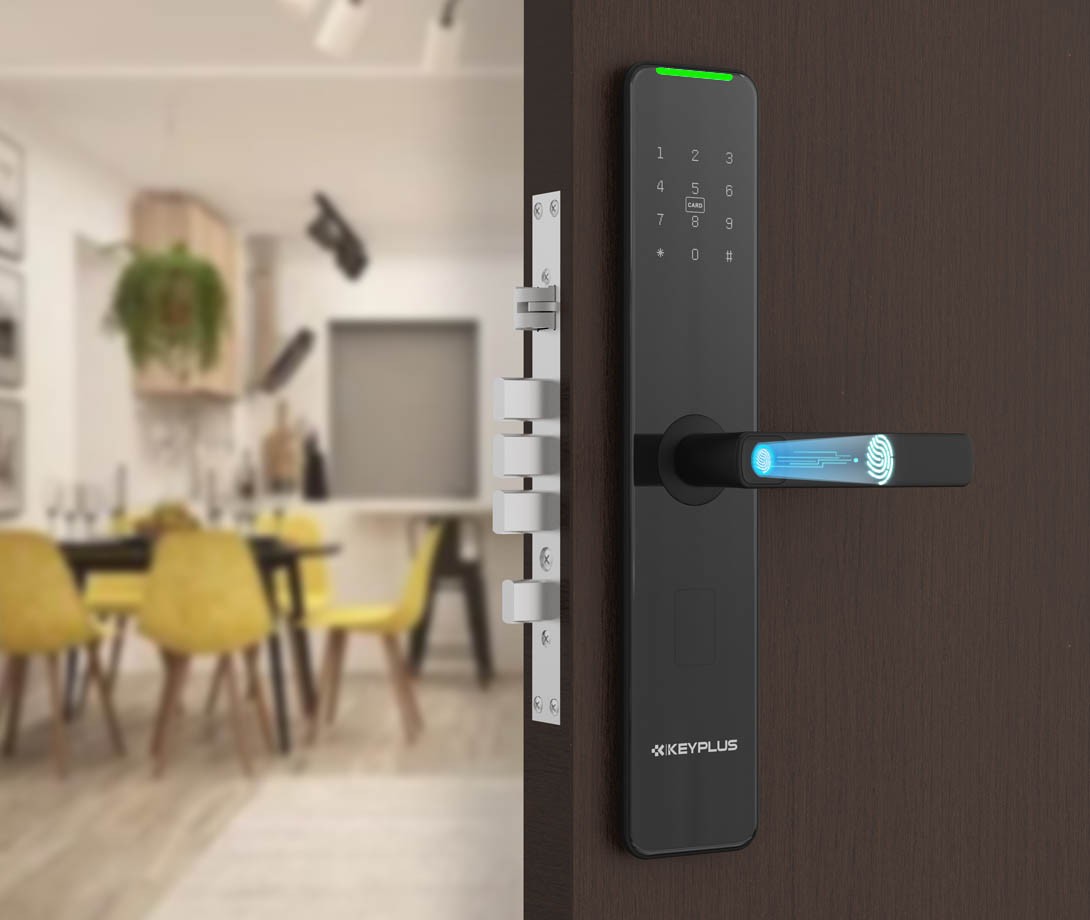What Powers a Smart Lock?
If you’re considering upgrading to a smart lock, one of the most important questions is: What keeps it running? Unlike traditional deadbolts that work with just a key, smart locks rely on power sources to enable keyless entry, remote access, and automation. But how do they stay powered, and what happens when the battery dies?
This guide breaks down everything you need to know about smart lock power sources, battery life, backup options, and how to choose the right system for your home.
1. How Do Smart Locks Get Power?
Smart locks need electricity to operate their electronic components, including:
- Wi-Fi/Bluetooth radios (for remote access)
- Keypads or fingerprint scanners
- Motorized deadbolts (for auto-locking/unlocking)
There are three primary power sources for smart locks:
A. Batteries (Most Common)
The majority of smart locks use standard or rechargeable batteries, making them easy to install without wiring.
- Types of Batteries Used:
- AA or AAA Alkaline
- Lithium-ion rechargeable
- CR123A or 9V
- Battery Life:
- 6 months to 2 years, depending on usage.
- Frequent Wi-Fi/Bluetooth use drains batteries faster.
- Pros:
- No wiring needed (easy DIY install).
- Works during power outages (if home Wi-Fi is up).
- Cons:
- Requires occasional battery changes.
- Extreme cold can reduce battery efficiency.
B. Hardwired (Plug-In or Low-Voltage Wiring)
Some high-end smart locks can connect directly to your home’s electrical system.
- How It Works:
- Uses a low-voltage wire (similar to a doorbell).
- May require an electrician for installation.
- Best For:
- Commercial buildings.
- Smart homes with advanced security systems.
- Pros:
- No battery changes needed.
- More reliable for 24/7 access.
- Cons:
- Complex installation (not renter-friendly).
- Fails during power outages unless backed up.
C. Hybrid (Battery + Wired Backup)
Some locks,, use batteries as the primary source but can connect to wiring for backup.
- Best For:
- Homeowners who want reliability without full wiring.
- Pros:
- Works even if one power source fails.
- Cons:
- More expensive.
2. How Long Do Smart Lock Batteries Last?
Battery life varies widely based on:
- Lock brand & model
- Usage frequency (auto-locking, remote access)
- Climate (cold weather drains batteries faster)
3. What Happens When the Battery Dies?
A dead battery doesn’t necessarily mean you’re locked out. Most smart locks have emergency backup options:
A. Physical Key Override
- Many models include a keyhole for manual unlocking.
- Downside: If you lose the key, you’ll need a locksmith.
B. External Battery Boost
- Some locks let you tap a 9V battery to the exterior for a quick power boost.
C. Wireless Charging (Emerging Tech)
- Newer locks support Qi wireless charging in emergencies.
4. How to Extend Battery Life
To avoid frequent changes:
Turn off unnecessary features (e.g., reduce auto-lock frequency).
Use lithium batteries (better in cold climates).
Keep firmware updated (efficiency improvements).
Install a Wi-Fi bridge (reduces direct Wi-Fi drain).
5. Wired vs. Battery: Which Should You Choose?
Go Battery-Powered If:
You want easy DIY installation.
You rent or move frequently.
You don’t mind occasional battery swaps.
Go Wired If:
You hate battery maintenance.
You need 24/7 reliability (e.g., Airbnb hosts).
Your home already has compatible wiring.
Hybrid Locks offer the best of both worlds but cost more.
6. Future Trends in Smart Lock Power
- Solar charging (experimental in some models).
- Energy-harvesting (using motion to generate power).
- Better low-power Bluetooth (longer battery life).
Final Verdict: What’s Best for Your Home?
For most Americans, battery-powered smart locks strike the best balance between convenience and reliability.
If you’re tech-savvy and want a permanent solution, hardwired or hybrid locks are worth considering—just be prepared for a more complex setup.
Pro Tip: Pair your smart lock with a keypad or fingerprint reader for extra backup access. Now, enjoy key-free living—without the fear of getting locked out!
Post time: Apr-28-2025


